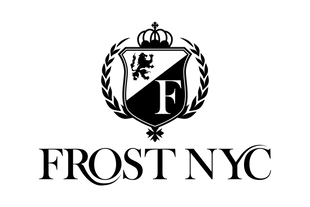What is a Choker Necklace? A Brief History and Intro to the Choker
Y2K fashion is making a comeback with Millennials and Gen Zers jumping on the trend with baby tees, velour tracksuits, and bright neon and metallic colors. One of the hottest Y2K jewelry trends to grace the social media accounts of the fashion industry’s biggest influencers is the choker necklace.

Source: Claudia K/Shutterstock.com
What is a Choker Necklace?
A choker necklace refers to any neck chain approximately 14” to 16” long. Chokers are typically close-fitting and sit just above your clavicles on the suprasternal notch.
They can be made from almost any material, from the iconic ‘90s stretch plastic chokers, to gothic black velvet, to chunky Cuban link chokers that give off a nostalgic hip-hop vibe.
Shop Gold Chain Chokers at Frost NYCChoker Necklaces Throughout History
Although chokers have always felt like a classic ‘90s wardrobe staple, they have a curious history that stretches back to pre-Christian Sumeria and Ancient Egypt. Throughout history, choker necklaces have taken on various meanings and roles in addition to a stylish accessory, including a protective amulet, death symbol, and romantic gesture.
- The Ancient World
In ancient Mesopotamian and Egyptian cultures, choker necklaces were used as healing tools and were thought to be imbued with protective powers. Chokers were used to protect against harm and evil, so they were typically made of gold, representing Ra, the god of sun. Royals and members of the upper class wore gold chains high on their neck, wrists, and head to protect the body parts they felt were most vulnerable. Some Native American tribes also wore chokers made from animal bones to protect the jugular during battle.
Choker necklaces were used as an amulet and adorned with charms or pendants. Pregnant women in Egypt wore chokers with small hippopotamus charms, symbolizing Taweret, the goddess of childbirth and fertility. The Egyptians believed this would facilitate easy labor.
- Post-Revolution France
During the Age of Enlightenment, chokers were popular among European aristocrats. The slim gold chains, strings of pearls, and silk ribbons didn’t compete with their elaborate dress designs. Anne Boleyn famously wore a string of pearls fashioned into a choker with a letter B pendant in her most well-known portrait.
However, after the advent of the French Revolution in 1789, the choker took on new significance. Post-Revolution French citizens wore thick red ribbons around their necks to symbolize those who lost their lives to the guillotine.
Red ribbon chokers also came into vogue in England to mock the French for their tribulations. The choker also demonstrated anti-French sympathies following the American Revolution after the French aided the colonists to oust the Brits and gain independence.

Source: Wirestock Creators/Shutterstock.com
- Victorian England
The choker trend continued well into the reign of Queen Victoria. By then, chokers became popular with the working classes. Although many couldn’t afford lavish gold or jeweled chains, strips of fabric or ribbons worn around the neck were an affordable way to accessorize. However, the choker quickly became synonymous with sex work as prostitutes donned the look to hide pox scars and other signs of disease.
This negative connotation didn’t phase Queen Victoria or Princess Alexandra of Denmark (who married Queen Victoria’s son, Edward VII.) Princess Alexandra began wearing necklaces stacked on her neck after traveling throughout India and becoming enamored with their jewelry styles.
- The Twentieth Century
The 1920s saw the simple rope pearls or fabric chokers get a luxurious upgrade. Shorter bob haircuts made necklaces more visible, and jewelry designers began creating elaborate chokers studded with diamonds and precious gems to complement the popular Art Deco style of the era.
For several decades, the choker fell out of favor for more subtle, utilitarian jewelry pieces. However, the 1960s and ‘70s saw the trend get a gender-bent revival with musicians like David Bowie, Mick Jagger, and Jimi Hendrix rocking the look. Chokers made from suede with studs, beads, and feathers became the look du jour.
Finally, the 1990s saw a resurgence of chokers as part of the punk and grunge music scenes, with padlocks, dog collars, and chunky metal chains. Mainstream culture quickly adopted the style, with tattoo-style plastic chokers and velvet ribbons signifying a new rebellious age.
Discover the Huge Range of Gold Chain and Pendants at Frost NYC
Source: Ander5/Shutterstock.com
Stay On-Trend at Frost NYC
Choker necklaces are more than just the latest fashion statement. They symbolize a history of design influenced by significant cultural and historical events, adding an extra special element of surprise to your outfit.
To embrace the Y2K trend, shop the stunning selection of solid 14K gold chains at Frost NYC. Or contact our design team to create a one-of-a-kind custom choker that accentuates your style.
